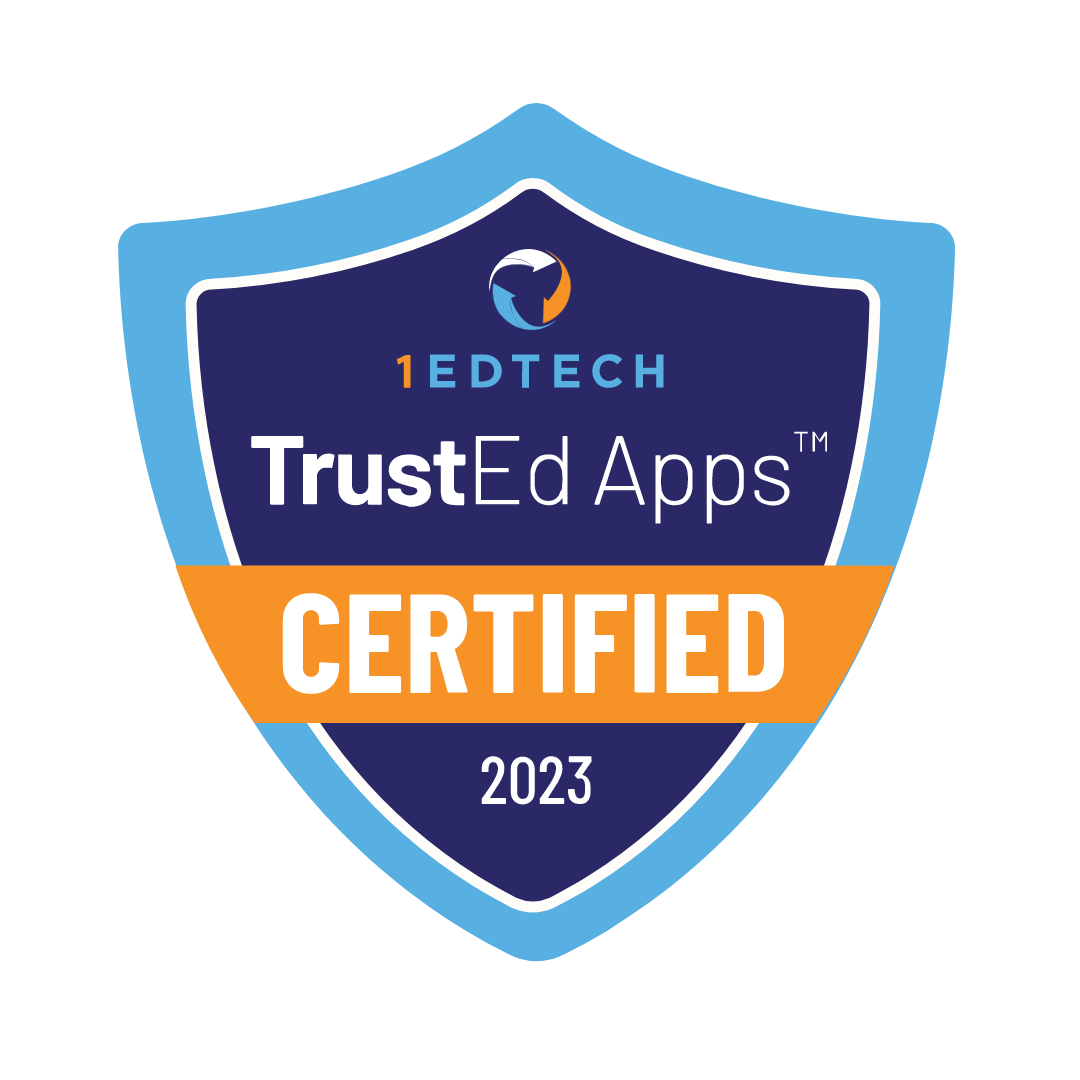Contents
- 1 The Importance of K-12 Online Curriculum Standards
- 2 How to Read, Understand, and Interpret Educational Standards
- 3 Different Types of Standards
- 4 Applying Standards to Lesson Planning
- 5 Tips and Strategies for Interpretation of Educational Standards
- 6 Components of K-12 Online Curriculum Standards
- 7 The Role of Teachers in K-12 Online Curriculum
- 8 The Role of Students in K-12 Online Curriculum
- 9 Conclusion
Digital education is a key part of teaching and learning. This education has many requirements to ensure high quality. We’ll talk about K-12 online curriculum standards, which are one of these requirements.

K-12 online curriculum standards are guidelines ensuring online courses for kindergarten through 12th grade meet quality benchmarks. These guidelines cover areas like course content, teaching methods, assessments, and student support. We will look at these standards and the roles of teachers and students in using them.
The Importance of K-12 Online Curriculum Standards
“I think the key to a good education for our students, and for them to be able to move forward to whatever college and career choices they may make, is to be sure we have rigorous, high academic standards”
Pam Stewart, University of Central Florida
K-12 online curriculum standards guarantee quality education for students. These guidelines ensure lessons, assignments, and teaching methods meet high standards. Students during lessons learn what they need to, just like in regular schools.
These standards help teachers create lessons, track progress, and give students the support they need. The guidelines make sure the curriculum is consistent, no matter which online school a student attends.
How to Read, Understand, and Interpret Educational Standards
Education participants need to understand how to read and use educational standards. We’ll explain how to handle these standards and provide a specific example.

How to Work with Educational Standards?
Working with educational standards means understanding what students are expected to learn at each grade. Here are five key principles to follow:
- Look at the specific subject area, like math or language arts. Each subject will have its own set of standards.
- Educational standards are usually divided by grade. Check the grade level to see what’s expected for that age group.
- Standards are written as clear objectives for students. They describe the skills or knowledge students have by the end of the course.
- Look for key terms like “analyze,” “describe,” or “compare”. These terms help you understand what students need to do. These words tell you how deeply students need to engage with the material.
- Some standards include examples or explanations to help you see what student work looks like at each level. Pay attention to these examples.
Use these principles to understand expectations and guide teaching or learning.
Working with Common Core State Standards (CCSS)
Let’s look at an example from the CCSS for 5th-grade writing: CCSS.ELA-LITERACY.W.5.1: “Write opinion pieces on topics or texts, supporting your point of view with reasons and information”. Here’s how to use this standard:
- Break it down. The goal is for 5th-grade students to write opinion pieces. The student must clearly express their point of view and back it up with reasons and information.
- Understand the key terms. Opinion pieces: students are expected to write essays where they express their thoughts on a topic.
- Interpret the standard correctly. The focus isn’t just on writing, but on argumentative writing. This helps students practice forming and defending an opinion. Teaching focuses on guiding students to organize their thoughts, gather relevant information, and present it logically.
- Use action steps. Provide topics or texts for students to form opinions about something. Teach students how to use facts and examples to support their opinions. Practice writing structured essays with clear introductions, supporting paragraphs, and conclusions.
- Use assessment to check their understanding.
Parents and teachers understand what’s expected and how to meet the requirements by using the standard this way.
Different Types of Standards
There are different types of educational standards guiding teaching and learning. We’ll look at five key types.
Content Standards
Content standards specify what students need to learn in each subject at every grade level. These standards ensure consistency across schools and states.
Here’s an example: CCSS.Math.Content.3.OA.A.1. These standards outline what students should learn in math from kindergarten through 12th grade.
Performance Standards
Performance standards describe how well students should perform on specific tasks or skills. These standards include benchmarks or rubrics to measure student success.
Here’s an example: Next Generation Science Standards (NGSS). These standards outline what proficiency in science looks like by grade level.
Process Standards
Process standards focus on the methods and skills students use to engage with content.
Here’s an example: CCSS.Math.Content.4.NBT.B.4. These standards guide students to develop critical thinking and problem-solving abilities in math.
Professional Standards
Professional standards set guidelines for teachers. They define the qualifications, skills, and knowledge needed to teach students.
Here’s an example: Interstate Teacher Assessment and Support Consortium (InTASC Standards). These standards outline the expectations for teachers at different career stages.
Technology Standards
Technology standards make sure students and teachers are using digital tools effectively.
Here’s an example: International Society for Technology in Education (ISTE Standards). These standards explain how to integrate technology in classrooms.
Applying Standards to Lesson Planning
Applying standards to lesson planning makes sure your teaching matches what’s expected for students. Parents and teachers use these principles when adding standards to lesson plans:
- Look at the standards for your subject and grade to see what skills students should learn.
- Use the standards to create clear goals for your lesson.
- Design activities to help students meet these goals. Use hands-on tasks or examples to explain concepts like multiplication.
- Test students to see if they’ve learned what the standards require.
- Make sure the lesson works for different learning styles and abilities.
Tips and Strategies for Interpretation of Educational Standards
|
Parents and Teachers, Take Note
The research “Improving the Standards of Education” was conducted by Dr. Radhika Kapur. This research identifies key strategies for improving education standards. The research revealed gaps in content coverage. Competencies were covered in less than 20% of courses. No redundancies were found across 80% of the courses. This study suggests updating the curriculum and focusing on critical thinking and fieldwork integration to address these gaps.
|
Here’s how to effectively interpret and apply educational standards:
- Learn what action words like “analyze” and “compare” mean in the standards. Use an Education Glossary to learn key terms.
- Divide the standards into smaller, clear objectives. Use Understanding by Design principles to see how to do this.
- Look at sample tasks to see how standards are applied. Use Common Core Sample Questions to get more information.
- Ensure your lessons match the standards. Use Curriculum Alignment Guide to ensure your curriculum matches the standards.
- Use feedback from assessments to improve how you meet the standards. Try Assessment Resources for more details.
Components of K-12 Online Curriculum Standards

K-12 online curriculum standards outline what’s needed for effective online education. Knowing these components helps teachers stay on track with learning goals. Here’s a look at the six key components of curriculum standards:
- Learning goals. This includes guidelines defining what students need to know and do at each grade level.
- Teaching methods. This includes guidelines describing approaches and strategies teachers use to achieve educational objectives.
- Content. This includes guidelines about core subjects and topics students learn. These subjects include math, science, reading, and writing.
- Skills development. This includes guidelines about critical thinking, problem-solving, communication, and other skills students need to succeed. This includes academic and practical skills.
- Assessment. This includes guidelines for evaluating student progress. Standards include benchmarks for measuring how well students are learning through tests, projects, and other assessments.
- Technology integration. This includes guidelines specifying how technology is used to enhance learning. The technology includes digital resources, multimedia, and interactive tools.
Legacy Online School offers an accredited curriculum for elementary, middle, and high school. This curriculum includes live teaching in small groups for personalized attention.
The Role of Teachers in K-12 Online Curriculum
Teachers do more than just present lessons. Teachers create an engaging and supportive learning environment tailored to each student’s needs. Here are five ways teachers create this environment:
- Design and deliver lessons to align with online curriculum standards. Teachers use virtual tools like video lessons, interactive activities, and discussion boards to teach effectively.
- Provide feedback on assignments, quizzes, and projects to help students understand their progress. Teachers assess students’ work based on curriculum standards. They adjust their teaching strategies to ensure everyone stays on track.
- Support students academically and emotionally. Teachers help students stay motivated, answer questions, and provide extra help when needed.
- Adapt their methods to meet the diverse needs of students. This involves using additional resources, providing more individualized attention, or adjusting the pace of lessons.
- Guide students in using online tools and resources. Teachers ensure students know how to navigate platforms, access materials, and submit assignments.
Legacy Online School has certified teachers from diverse cultural backgrounds. Our teachers know how to follow standards and help students succeed in online learning.
The Role of Students in K-12 Online Curriculum
Students’ responsibilities go beyond just attending virtual classes. Here’s how students contribute to their success:
- Stay motivated and disciplined to complete assignments and attend virtual lessons.
- Follow deadlines and keep up with the pace of the curriculum.
- Engage with teachers and peers to understand the content and stay connected.
- Take responsibility for their own learning by asking questions, seeking help, and using available resources.
- Develop technical skills for navigating online education.
Conclusion
Educational standards keep digital learning effective. We’ve looked at why they matter, the types of standards, and how to use them. This knowledge helps parents, teachers, and students succeed in online learning.











